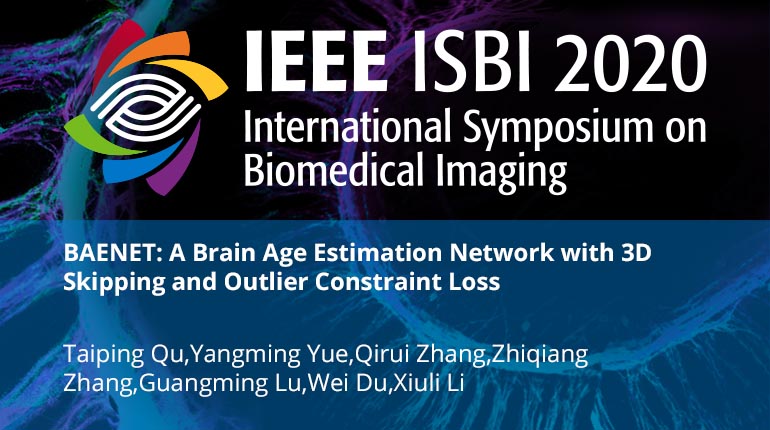
Already purchased this program?
Login to View
This video program is a part of the Premium package:
BAENET: A Brain Age Estimation Network with 3D Skipping and Outlier Constraint Loss
- IEEE MemberUS $11.00
- Society MemberUS $0.00
- IEEE Student MemberUS $11.00
- Non-IEEE MemberUS $15.00
BAENET: A Brain Age Estimation Network with 3D Skipping and Outlier Constraint Loss
The potential pattern changes in brain micro-structure can be used for the brain development assessment in children and adolescents by MRI scans. In this paper, we propose a highly accurate and efficient end-to-end brain age estimation network (BAENET) on T1-weighted MRI images. On the network, 3D skipping and outlier constraint loss are designed to accommodate deeper network and increase the robustness. Besides, we incorporate the neuroimage domain knowledge into stratified sampling for better generalization ability for datasets with different age distributions, and gender learning for more gender-specific features during modeling. We verify the effectiveness of the proposed method on the public ABIDE2 and ADHD200 benchmark, consisting of 382 and 378 normal children scans respectively. Our BAENET achieves MAE of 1.11 and 1.16, significantly outperforming the best reported methods by 5.1% and 9.4%.
The potential pattern changes in brain micro-structure can be used for the brain development assessment in children and adolescents by MRI scans. In this paper, we propose a highly accurate and efficient end-to-end brain age estimation network (BAENET) on T1-weighted MRI images. On the network, 3D skipping and outlier constraint loss are designed to accommodate deeper network and increase the robustness. Besides, we incorporate the neuroimage domain knowledge into stratified sampling for better generalization ability for datasets with different age distributions, and gender learning for more gender-specific features during modeling. We verify the effectiveness of the proposed method on the public ABIDE2 and ADHD200 benchmark, consisting of 382 and 378 normal children scans respectively. Our BAENET achieves MAE of 1.11 and 1.16, significantly outperforming the best reported methods by 5.1% and 9.4%.
 Cart
Cart Create Account
Create Account Sign In
Sign In





